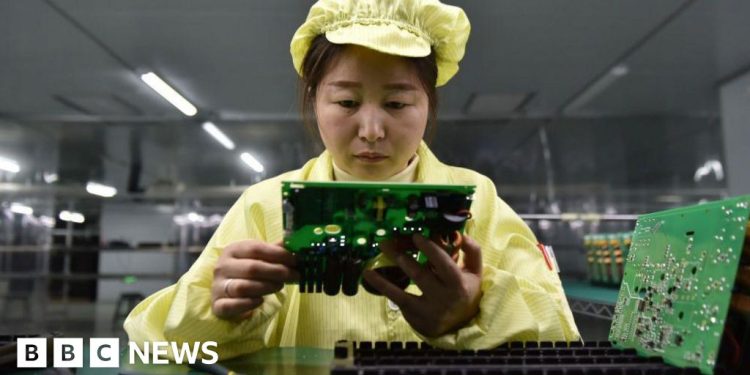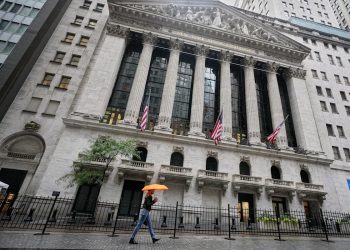China’s economic growth slowed in the three months to the end of September due to escalating trade tensions with the United States.
The world’s second-largest economy grew 4.8% compared to the same period in 2024, its weakest pace in a year, according to official figures released on Monday.
The data comes after China imposed draconian controls on its exports of rare earths, minerals critical to global electronics production, a move that shook its fragile trade truce with the United States.
Third-quarter gross domestic product (GDP) growth will set the tone for a gathering of China’s top leaders this week to discuss the country’s economic plan between 2026 and 2030.
Growth of 4.8% in the third quarter marked a slowdown from 5.2% in the three months to July.
China’s National Bureau of Statistics said the economy showed “strong resilience and vitality” in the face of pressures. It sees the dynamics of its technology sector and business services as key growth drivers.
Beijing has set a target for economic growth of “around 5%” this year and has so far avoided a sharp slowdown, helped by government support measures.
US President Donald Trump responded quickly to Chinese controls on rare earths by threatening to impose additional 100% tariffs on imports from China.
US Treasury Secretary Scott Bessent said he planned to meet with Chinese officials this week in Malaysia in a bid to ease tensions and arrange a meeting between Trump and his counterpart Xi Jinping.
Before the recent surge, Chinese companies had taken advantage of the trade truce with Washington to ship goods to the United States, causing Chinese exports to rise 8.4% in September. The total value of imports to China also increased.
China’s industrial production rose 6.5% last month from a year earlier, with makers of 3D printing, robotics and electric vehicles among its best performers.
Its services sector, which includes IT support, consulting services, and transportation and logistics companies, has also grown.









